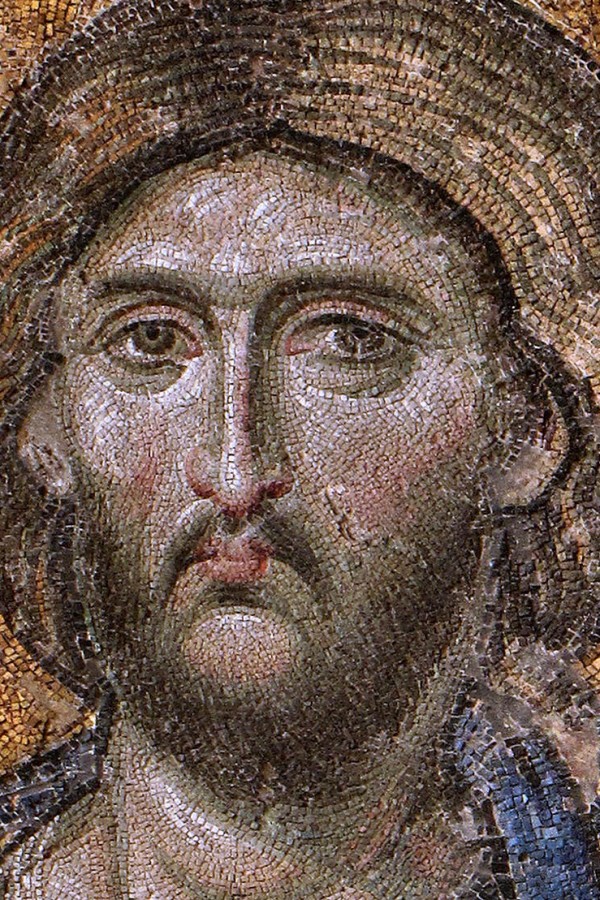What emotions is this person feeling?

Christ Pantocrator,
c. 1261
-
Bright emotions
-
Not at all Extremely
-
-
Quiet emotions
-
Not at all Extremely
-
-
Heavy emotions
-
Not at all Extremely
-
-
Sombre emotions
-
Not at all Extremely
-
Compare yourself to others
Choose different variables below, and see the patterns of response reflected in the circle of emotion above. Your responses are the coloured wedges. Others' responses are averaged in the spider graph of lines and dots.

Date: c. 1261
Creator of the image: Unknown Date of the image creation: c. 1261 Medium of the image: Ceramic tiles Person depicted: Jesus Christ This mosaic of Christ Pantocrator, the ‘ruler over all’, depicts the central figure of the so-called ‘Deësis mosaic’. It is an excellent example of an iconic tradition representing Christ Pantocrator on a throne, holding a book and flanked by the Virgin Mary and St John the Baptist, and occasionally other saints and angels. The flanking figures face towards Christ, their hands raised in a form of prayer known as supplication, in which they pray for humanity. The mosaic was commissioned around 1261 to mark the end of 57 years of Roman Catholic use of the Hagia Sophia, which had just returned to Orthodox faith. The mosaic is taken from the third panel of the imperial enclosure in the upper galleries. Many consider it the finest artwork in the Hagia Sophia, with figures portrayed with stunningly soft features and vivid use of tone — not an easy feat with a mosaic. There is an intense humanity to the figures, an emotional realism that marks it as one of the earliest examples of Renaissance art in the Byzantine period. Hagia Sophia, in Istanbul, Turkey. Construction of the impressive structure on the site of two razed churches began in 532. These churches were repaired and repurposed over the following millennia-and-a-half. Beginning as a Christian basilica, the structure served as a Greek Orthodox cathedral, a Roman Catholic cathedral, the seat of the of the Patriarch of Constantinople, and then, as of 1453, as an imperial mosque when the city was taken by the Ottomans. Currently, as of 1935, the structure is secularized and functions as a museum.